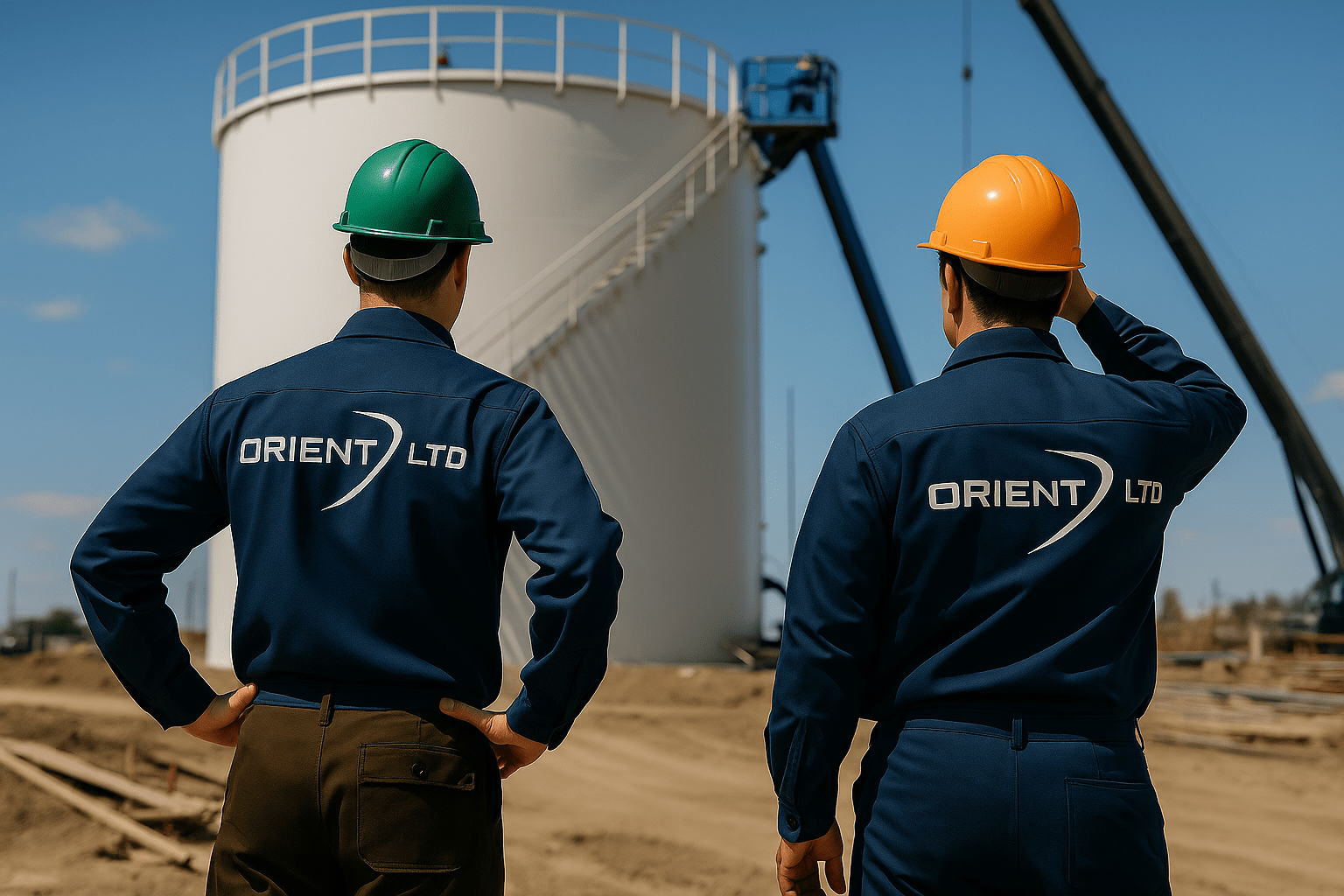1. Why tank quality is a matter of safety and durability
The quality of manufacturing and installation of a steel tank determines not only its operational life, but also personnel safety, environmental responsibility and financial risks for the enterprise. Therefore, before commissioning, tanks must undergo a series of tests and inspections in accordance with DSTU, DBN and industry standards. This is especially true for tanks for petroleum products (PVS-100, PVS-200, PVS-500, PVS-1000), where even a small mistake can lead to a large-scale accident or fines.
2. A set of mandatory tests: what is checked and how
Visual inspection is the first and mandatory stage of tank acceptance. Specialists check the surface for cracks, dents, corrosion, quality of painting, correct marking and assembly. Particular attention is paid to joints, pipes, flanges, hatches.
Hydraulic testing of a tank is the most reliable way to check the tightness of a structure. The tank is filled with water to the working or control level, left for a certain time (usually 24–72 hours), after which the seams, bottom, flanges, and connections are inspected. Leaks, condensation, and moisture on the surface are not allowed.
Non-destructive testing of welds is done by ultrasonic, capillary, vacuum or magnetic particle method. The most common is ultrasonic flaw detection: a special device checks the integrity of the welds and the wall thickness along the entire perimeter. If a defect is detected, it is necessary to carry out further work and re-inspection.
Vacuum testing is often used for double bottoms or hard-to-reach places. A vacuum is created in a controlled area, and the pressure change is monitored - tightness is considered confirmed if there are no leaks.
Control of painting and anti-corrosion protection - check the thickness and uniformity of the coating (with a device), the integrity of the insulation, the quality of cleaning before applying paint (sandblasting to Sa 2½ according to ISO 8501-1).
3. What should the customer pay attention to when accepting the tank?
Documents:
- Hydraulic test report (with photo fixation),
- Non-destructive testing protocols for seams,
- Metal and coating certificates,
- Original KM/KMD drawings with change marks,
- Installation log and certificate of completed work.
Practical tips:
- Don't be lazy to personally inspect the tank, preferably with an independent expert.
- Make sure that all components, ladders, hatches, and pipes are in place, with high-quality sealing and labeling.
- Do not accept a tank without confirmed hydraulic test results - this is the main guarantee of tightness!
- Pay attention to the condition of the paint - there should be no peeling, bubbles, or rust.
A high-quality tank is not only metal and welding, but also a set of documents, tests, and modern control technologies.
Conclusion:
Compliance with standards and proper inspection of the tank before delivery is your insurance against expensive accidents and losses. Order tanks only from companies that guarantee a full control cycle, official documents, and modern testing methods.


.svg)





.svg)
.svg)